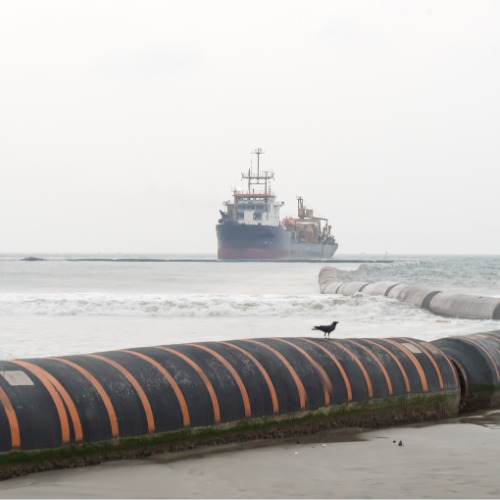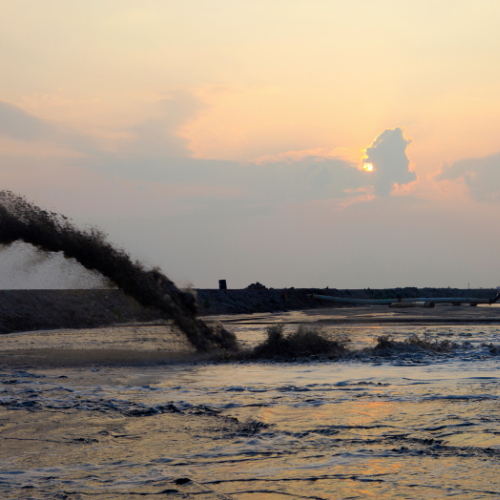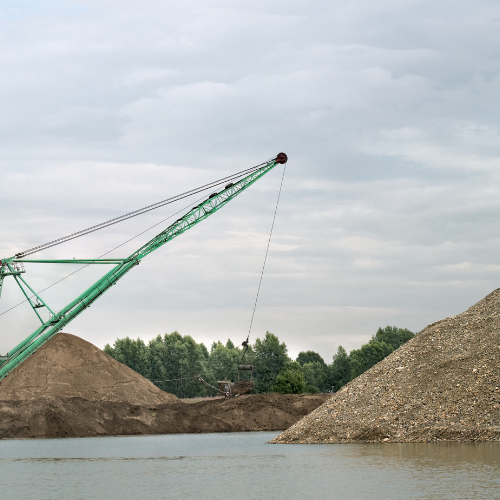Introduction.
As urban populations soar, cities face pressing challenges that require innovative solutions. One promising approach to urban expansion is land reclamation from shallow seas. This process not only addresses the need for more space but also offers opportunities for economic growth, environmental stewardship, and urban revitalization. In this comprehensive guide, we will explore how shallow sea waters can be dredged to create new land, the relocation of ports to deeper waters, and the materials and methods that ensure strong foundations for these ambitious projects.This project can be incooperated into future plans when needed.
The Concept of Land Reclamation.
What is Land Reclamation?
Land reclamation is the process of creating new land from oceans, rivers, or lakes. It involves dredging sediment from shallow waters, transporting it, and filling designated areas to create usable land. This method has been successfully implemented in various urban areas around the world, allowing cities to expand without encroaching on existing natural landscapes.
Why Reclaim Land from Shallow Seas?
- Urban Expansion: As cities become increasingly congested, reclaiming land from shallow seas offers a viable solution for creating new residential, commercial, and industrial spaces.
- Economic Growth: New land can attract businesses, stimulate job creation, and enhance trade opportunities.
- Environmental Benefits: By relocating ports to deeper waters, we can protect coastal ecosystems, reduce pollution in sensitive areas, and improve marine biodiversity.

The Dredging Process.
Understanding Dredging.
Dredging is essential for land reclamation. It involves removing sediment and debris from the seabed, enabling the creation of new land. Various methods of dredging can be employed, depending on the specific requirements of the project.
Types of Dredging Techniques.
- Mechanical Dredging: In this method, equipment like clamshell buckets or backhoes is used to scoop out materials. It is effective for precise dredging in shallow waters.
- Hydraulic Dredging: This technique utilizes suction systems to draw sediment into pipelines. It is particularly efficient for transporting large volumes of material over distances.
- Cutter Suction Dredging: Combining mechanical and hydraulic methods, this approach uses a rotating cutter to loosen sediment before suctioning it away.
Steps for Successful Land Reclamation.
1. Site Assessment
Before commencing any dredging operations, it is crucial to conduct a thorough site assessment. This includes evaluating environmental impacts, soil composition, and hydrological assessments to ensure the project is feasible and sustainable.
2. Dredging Operations
Once the site is assessed, dredging operations can begin. The duration of this phase can vary based on the project’s scale.
3. Material Transportation
After dredging, the materials must be transported to the designated area. This can involve trucks, barges, or pipelines.
4. Filling and Compaction
The dredged materials are then used to fill the designated area. Compaction is vital to ensure stability and prevent future settling.
5. Foundation Construction
Strong foundations are essential for any infrastructure built on reclaimed land. Various techniques can be employed, including:
- Compacted Fill: A mixture of gravel, sand, and clay that is compacted to create a stable base.
- Geotextiles: Synthetic fabrics that reinforce soil and prevent erosion.
- Reinforced Concrete and Steel: Commonly used for heavy structures, providing additional strength.
The Importance of Relocating Ports.
Why Move Ports to Deeper Waters?
As urban centers expand, relocating ports to deeper waters becomes increasingly beneficial. Here’s why:
- Accommodating Larger Vessels: Deeper ports can handle larger ships, increasing cargo capacity and optimizing shipping times.
- Protecting Coastal Ecosystems: By moving ports away from sensitive coastal areas, we can minimize the impact of pollution and overexploitation.
- Stimulating Economic Development: Improved port facilities can attract businesses and create jobs, boosting the local economy.
Sustainable Materials for Reclaimed Land Foundations.
Building on reclaimed land requires careful selection of materials to ensure stability and longevity. Here are some sustainable materials commonly used in foundation construction:
- Compacted Fill: A mix of gravel, sand, and clay compacted for a stable base.
- Geotextiles: Used to reinforce soil and manage drainage, ensuring structural integrity.
- Concrete and Steel: Essential for heavy structures, providing strength and durability.
- Bamboo and Natural Materials: Sustainable alternatives being explored for their strength to weight ratio.
- Recycled Materials: Utilizing recycled concrete and other materials helps reduce waste and lower costs.
Environmental Considerations in Land Reclamation.
While land reclamation offers numerous benefits, it is essential to approach these projects with an eye toward environmental sustainability.
Potential Environmental Impacts.
- Ecosystem Disruption: Dredging and filling can disrupt marine habitats. Conducting thorough environmental impact assessments is crucial.
- Water Quality: The dredging process can release sediments and pollutants. Monitoring water quality during and after reclamation is necessary.
- Long Term Monitoring: Ongoing assessments of environmental impacts are essential to ensure the health of marine ecosystems.
Inspiring Case Studies of Land Reclamation.
Several cities worldwide have successfully implemented land reclamation projects, serving as inspiring examples:
1. Singapore
Singapore is renowned for its extensive land reclamation efforts, transforming its coastline into a vibrant urban landscape and enhancing its port facilities.
2. Dubai, UAE
The Palm Islands and The World project in Dubai showcase ambitious land reclamation, creating new habitats and boosting tourism.
3. Rotterdam, Netherlands
Rotterdam has expanded its port facilities into the North Sea, accommodating larger vessels while implementing sustainable practices.

Conclusion.
The potential for transforming shallow seas into urban landscapes is immense. By employing innovative dredging techniques, relocating ports to deeper waters, and utilizing sustainable materials for construction, cities can expand while fostering economic growth and environmental protection. Embracing these bold ideas will inspire the next generation of urban planners and engineers to think creatively and act responsibly, paving the way for a sustainable urban future.
Frequently Asked Questions. (FAQs)
1.What is land reclamation?
Land reclamation is the process of creating new land from bodies of water through dredging and filling.
2.What are the main methods of dredging?
The primary methods include mechanical dredging, hydraulic dredging, and cutter suction dredging.
3.Why is it beneficial to relocate ports to deeper waters?
Relocating ports increases capacity, protects coastal ecosystems, and stimulates economic growth.
4.What materials are commonly used for foundations on reclaimed land?
Common materials include compacted fill, geotextiles, concrete, steel, bamboo, and recycled materials.
5.What environmental considerations should be taken into account during land reclamation?
Key considerations include ecosystem disruption, water quality impacts, and the need for long-term monitoring of environmental effects.
By focusing on sustainable practices and innovative engineering solutions, cities can harness the potential of shallow seas to create vibrant, thriving urban environments for future generations.
